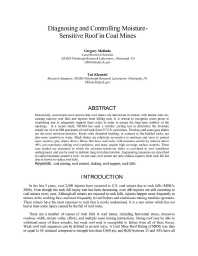Mining Publication: Diagnosing and Controlling Moisture-Sensitive Roof in Coal Mines
Original creation date: January 2008
Historically, coal miners have known that roof shales can deteriorate in contact with humid mine air, causing massive roof falls and injuries from falling rock. It is critical to recognize rocks prone to weathering and to adequately support these rocks in order to ensure the long-term stability of the openings. In a recent study, NIOSH has used a wet/dry cycling test to determine the moisture sensitivity of over 800 specimens of roof rock from 25 U.S. coal mines. Fireclays and some gray shales are the most moisture-sensitive. Rocks with disturbed bedding, in contrast to flat-bedded rocks, are also more sensitive to water. Black shales are relatively un-reactive to moisture and serve to protect more reactive gray shales above. Mines that have roof rocks with moisture-sensitivity indexes above 40% can experience slaking roof conditions, and many require high coverage surface controls. Three case studies are presented in which the moisture-sensitivity index is correlated to roof conditions underground, and can be used to indicate long term deterioration. Engineering measures are described to control moisture-sensitive roof. In one case, roof screen not only reduces injuries from rock fall but also is shown to reduce roof falls.
Authors: GM Molinda, TM Klemetti
Peer Reviewed Journal Article - January 2008
NIOSHTIC2 Number: 20034613
Electron J Geotech Eng 2008 Jan; 13(A):1-20
See Also
- ARBS - Analysis of Roof Bolt Systems - 2.5.02
- Development and Application of the Coal Mine Roof Rating (CMRR)
- Geologic Characterization
- Geologic Hazards and Roof Stability in Coal Mines
- Ground Failures in Coal Mines with Weak Roof
- The Introduction of Roof Bolting to U.S. Underground Coal Mines (1948-1960): A Cautionary Tale
- Optimizing Secondary Roof Support with the NIOSH Support Technology Optimization Program (STOP)
- Performance Characteristics for Welded Wire Screen Used for Surface Control in Underground Coal Mines
- Preventing Injuries Caused by Unrecognized Stone Mine Roof Beam Failures With a Pro-Active Roof Control Plan
- Report on Early Strength Performance of Modern Day Weak Rock Mass Shotcrete Mixes
- Roof and Rib Fall Incident Trends: a 10-Year Profile
- Content source: National Institute for Occupational Safety and Health, Mining Program


 ShareCompartir
ShareCompartir
